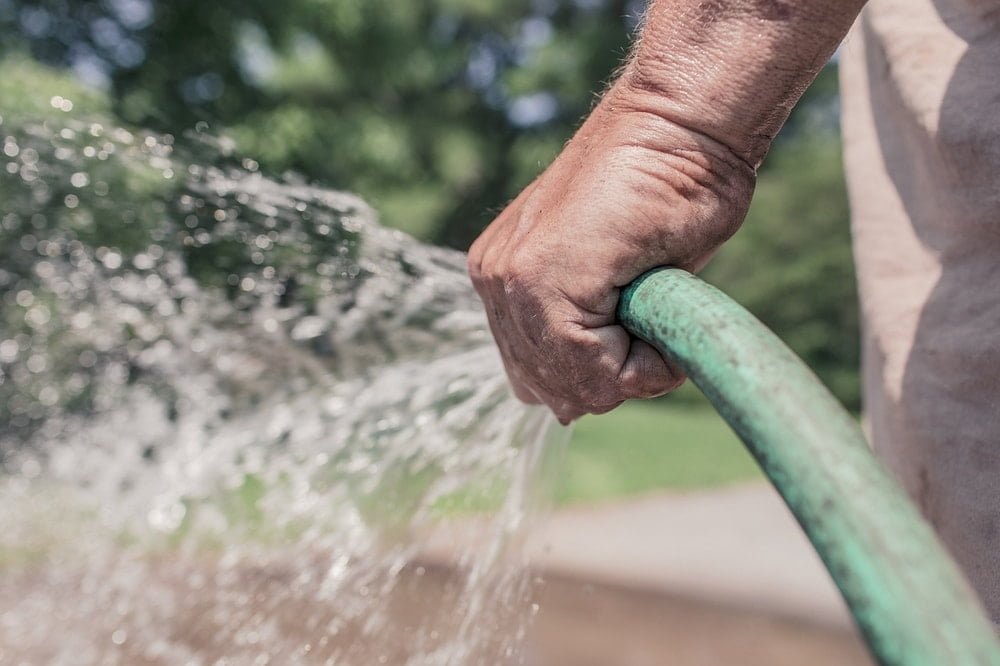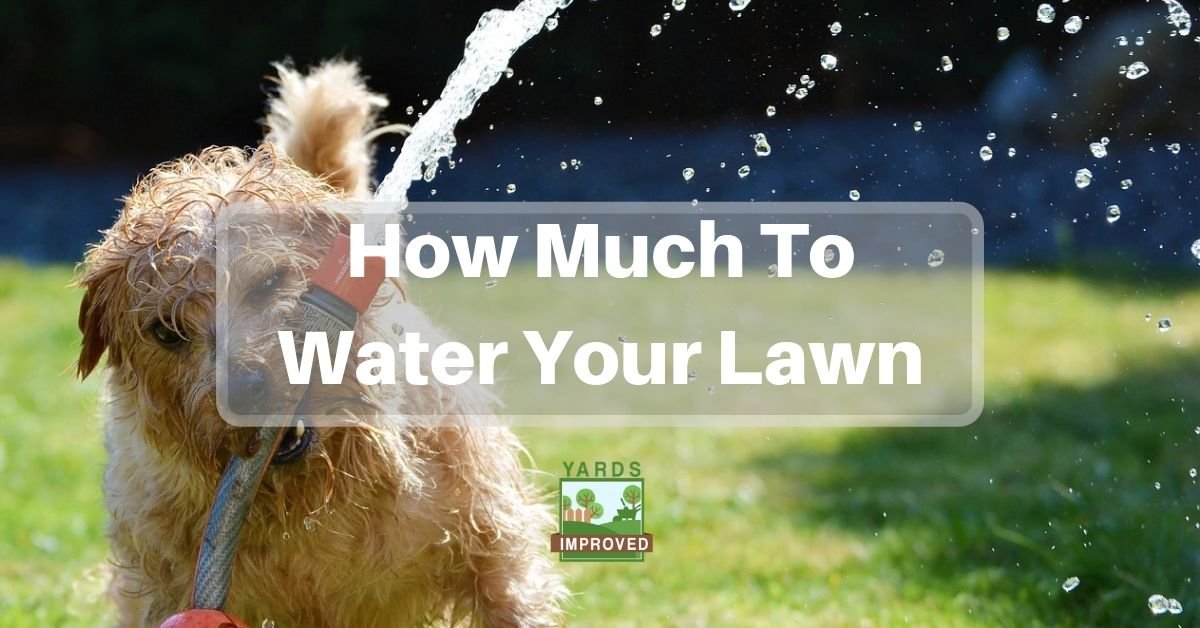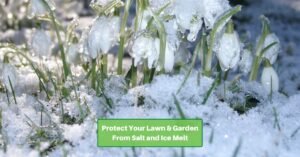If you want a beautiful lawn, you know that you have to water it properly. Grass, like every living thing, needs water to survive. But the right amount of water is essential to a full, healthy lawn.
It’s not enough to flip on the sprinklers or grab the hose and start spraying. Overwatering and underwatering can both be harmful to the grass’s health. It’s important to learn to recognize how much water is needed. So let’s get into some details!
What Happens If You Don’t Water Your Lawn Properly
The effects of insufficient water on grass are obvious: it turns brown and dies. Before that, though, it will lose its ability to bounce back. You can see that if you walk on the lawn and the grass doesn’t return to its normal position. Healthy grass should stand up straight again after it was pressed down.
Providing enough water helps the grass establish deep roots. This will keep it strong even in the hotter months.
On the other hand, too much water, or watering at the wrong time, can also be a problem. Mold can start to grow and destroy the roots and blades. This can also happen if you water when excess water won’t evaporate – knowing the right time to water is as important as providing the proper amount.
How Regularly Should You Water?
Your lawn needs a regular supply of water. To stay strong, it needs between 1 and 1 ½ inches of water a week. And that’s year-round!
Of course, that’s a combination of what you and Mother Nature provide. Your watering efforts are to make up for what isn’t provided otherwise. Of course, that means that how much watering you have to do will vary throughout the year.
The goal is that the soil should be damp to a depth of six to eight inches. It may take a while to figure how much watering that requires, but you’ll learn eventually without the need for constant checking. Your soil type, drainage, and other issues can influence how well the soil holds water. So it’s good to experiment until you understand your own lawn’s needs.

We prefer to water two to three times a week, dividing the total amount over that span. However, you can even do it once a week if you prefer.
We did mention that your lawn needs water all year. If you live in an area where you have snow or the ground freezes, it’s obvious that you can’t continue watering, though. If you have the appropriate type of grass, it’s adapted for this. It will also absorb water when the snow begins to melt.
How To Know If You’re Watering Enough
You don’t want to wait until your grass is suffering to know if you’re giving it enough to drink. So how can you know if you’re adding enough water?
One way would be to dig a small hole in a hidden corner of the yard to see how deep the soil is damp. But it’s even easier to use a screwdriver with a long blade. It should slide easily into the soil as long as the ground is wet. If you meet resistance before that 6-inch mark, you should be watering more.
Another easy way to measure is by using aluminum pie plates. Place a few around your lawn while you water or run the sprinkler. This will help you measure two things. First, it will show how much water is reaching the lawn. If you want to water 1 ½ a week, and plan to water three times, then the plates should be filled about ½ inch each time. But you’ll also be able to make sure the lawn is getting watered evenly – all the plates should have about the same amount of water.
If you see that the water is running off onto the driveway or into the street, take a short break to allow it to soak in. The ground needs more time to absorb it. If this is happening, you’re only wasting water. Come back in a while and continue. You still want to provide enough water, but it doesn’t do your lawn any good if it ends up in the sewer. And it’s not good for the environment or your wallet either!
Dealing with Water Restrictions
Many areas will face water restrictions. These may be occasional because of drought conditions, but in some locations, they are seasonal or even year-round.
There are possible fines that come with violating these restrictions, of course. But it’s also a matter of basic responsibility to care for the environment and our finite supply of water.
Be sure to observe your locality’s regulations. But here are some basic guidelines that will help conserve and keep you in line with the rules.
Common restrictions include limiting the time of day you can water. However, these usually reflect good watering practice, anyway.

Other restrictions prohibit use on certain days of the week. As we mentioned, though, you don’t need to water daily; twice or even once per week is sufficient in most circumstances.
Some “restrictions” reflect other good practices such as not overwatering or wasting water that flows off into the street.
If conditions are grave, it may be necessary to stop watering the lawn completely. This may cause the grass to turn brown and enter its dormant phase. However, once the drought conditions end, it can normally recover with some tender loving care.
Conclusion
Keeping your lawn healthy means giving it enough to drink. It’s important to find that crucial balance between letting it dry out and drowning it. Regular watering means working with the rainfall to make sure the ground stays damp and the roots go strong. With proper care, your garden will grow thick and green and be the envy of the neighborhood!









